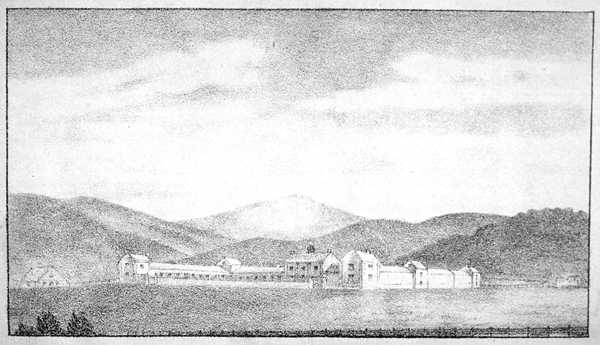 |
 |
|
Royal Derwent Hospital
The Royal Derwent Hospital's precursor at New Norfolk was an Invalid Barracks, which was expanded by Lt-Governor Arthur in 1827. A new hospital was built in 1830, the original Willow Court building, which by 1833 housed 113 invalids and 18 lunatics. In 1855 the colonial government took over the hospital and excluded the invalids. From then on increasing numbers of mentally ill patients mingled indiscriminately with the intellectually handicapped and only separated by gender. For the next hundred years or more it is a sorry tale of patients being accommodated in overcrowded, stark wards with nothing to mitigate their misery. A few gleams of light penetrate this awful darkness; ex-convict Chartist leader Zephaniah Williams negotiating patiently with rioting lunatics in 1845, determined efforts of the great humanist and reforming Bishop Willson from 1859, some dedicated doctors and wonderfully concerned matrons, but nothing any of these could do would make up for the lack of appropriate buildings, adequately trained staff, palatable food and activities. Every few years there was an official inquiry but little was done due to a lack of government funding. A new hospital nearer Hobart was frequently promulgated but was strenuously opposed by the New Norfolk community. In the 1950s new but already outdated wards were built and medication became available to treat the mentally ill. Segregation of the intellectually handicapped was suggested but not implemented until 1983. From then on de-institutionalisation to smaller community-sited care proceeded apace and the Hospital finally closed in 2001. Further reading: R Gowlland, Troubled asylum, New Norfolk, 1981; B Burkett, Royal Derwent Hospital and Millbrook Rise Hospital, Hobart, 1980. John Tooth |
Copyright 2006, Centre for Tasmanian Historical Studies |
